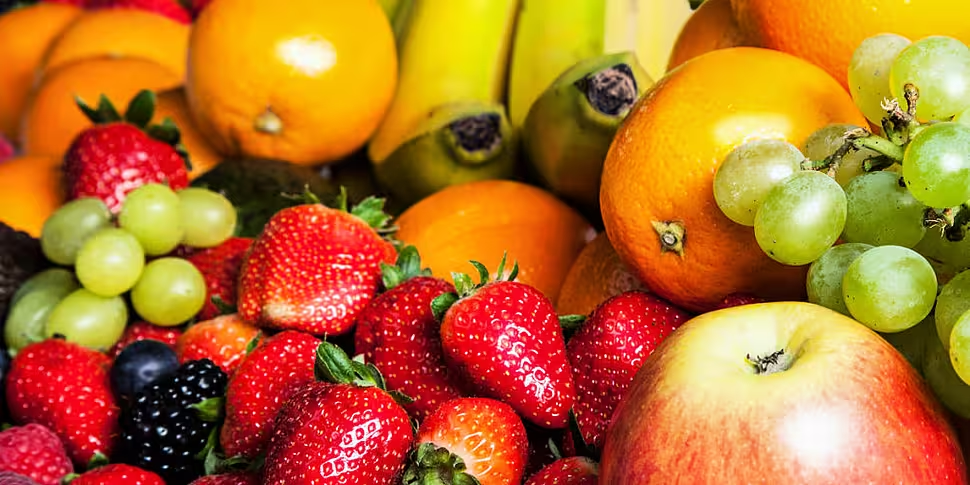Dean McGuinness reviews Timmerman’s Sloe Lambic and Delirium Red
FRUIT PLUS
Summer is here, and we have had some brief days of good weather, so time to get optimistic and start tasting some warm weather beers. Today we have two fruit beers, but we are looking at fruit beers in a slightly different way. Beer flavour is all about balance, so we are looking at how some brewers have used fruit to balance other flavours in their beer.
Our two beers for today are Timmerman’s Sloe Lambic and Delirium Red. The first of these is available in cans in the market – something quite different for a lambic beer. The second is available on draught in a select number of bars in Ireland, though we are tasting the bottled beer.
Fruit and Beer –
First thing that we need to do is address the elephant in the room. Should brewers use fruit in beer? The issue of slices of lime in bottles of Mexican lager is sure to trigger a lot of discussion. Likewise, there can be a lot of controversy about the use of ingredients outside of the Rheinheitsgebot (German Purity Laws) malted barley, hops, water and yeast. However, we have to remember that people have been brewing beer for over 6,000 years and the Rheinheitgebot is only a teenager at just over 500 years old.
The second thing that we will say is that we are tasting Belgian beers today. As a simple rule of thumb, the Germans make rules as to how exactly beers should be brewed, and the Belgians seek to break all of these rules. Again, beer is an expression of the personality of the brewer and the country in which the beer is brewed. However, even with this truism, there are some interesting considerations when it comes to fruit and beer. Germans do a sour style of beer – Berliner Weisse. It is quite common in Germany for Berlinerweisse to be served with raspberry syrup or a green syrup (woodruff) added to the beer. Even the Germans, with their strict rules on brewing, recognise that fruit as an addition in beer can work well.
So rather than asking if there is a rule about using fruit in beer, maybe we can look at it from two perspectives. Firstly, what is the history of using unusual (non-Rheinheitsgebot) ingredients in beer, and secondly – does it work, and why?
Brewers have used an array of alternative ingredients in their beer. In fact, the Rheinheitsgebot was an attempt by Brewers Guilds to control the use of non-desireable ingredients in beer. As well as using interesting, flavourful ingredients that work superbly well, it has also happened that brewers have used unusual ingredients. St. John’s Wort is an ingredient that has interesting considerations, and this is an ingredient that has been used in beer. When one considers the range of unusual ingredients that have been used in beer, one would have to accept that fruit should at least be considered as an acceptable alternative ingredient. Whether it should be used or not should then be down to whether it works or not.
Flavour in beer is all about balance. The goal of the brewer is to balance one flavour against another to add depth and complexity to the beer while not having one particular flavour overpowering the overall taste experience. Bitterness and spice are used (usually separately, sometimes together) to balance sweetness. Likewise, sourness can be balanced by sweetness (think sweet and sour). These flavours are the building blocks of a beer, and getting the balance right can be the most important first step in having a beer that will be enjoyed by beer drinkers.
When lambic brewers brewed sour beers, the challenge of sour flavours presented an interesting dilemma. Connoisseurs of sour beers appreciated the complexity and challenge of the diversity of sour flavours in the beer. Other beer drinkers found sour flavours challenging, even shocking. Lambic brewers wanted to show beer drinkers that sourness in and of itself was not a bad thing – it is simple a matter of the level of sourness that the individual beer drinker finds appealing. In fact, if one thinks of certain fruits (passion fruit and raspberry are good examples), people are quite happy to experience a level of acidity or sourness in the correct context.
Sourness is balanced by sweetness, so it is perhaps not a surprise that lambic brewers introduced fruit to their beers to provide a counterpoint to the base sourness of the beer. The result works superbly well. And, true to form, once lambic brewers established that one fruit worked well in beer (cherry – as kriek – seems to be the one that most often comes to the fore), many lambic brewers experimented with a range of other fruits. Oude Kriek involves macerating whole cherries in lambic, and the result is that the pit of the cherry adds its own tannic complexity to the flavour in addition to the distinct cherry sweetness. Lambic brewers have also brewed with peach, raspberry, strawberry, pumpkin and any other number of fruits, including the sloe berry fruit that is used in today’s beer.
By providing a sweet fruit counterpoint to the sourness, the sourness becomes less the foundation of the beer, and instead acts as an interesting contrasting flavour. Lambics are incredibly complex beers, and this complexity is still present in the beer. However, the identifiability of the fruit flavour provides an understanding to the fruit lambic drinker as to what to expect.
While our fruit lambic beer is at a quite sessionable level of alcohol content (at 3.5% a.b.v.), our second beer has a more typical Belgian punch at an alcohol level of 8.0% a.b.v. When beer is brewed at higher strength, the opportunity for the beer to build depth of flavour into the beer is enhanced. So, rather than relying on the complexity of wild yeasts that contribute complexity to the lambic, Delirium are using the complexity of a multi-strain ale yeast that is suited to high gravity fermentation to add complexity to our second beer.
Belgian ale yeasts are often multi strain yeasts, and they impart an array of interesting flavours in the beers in which they are used. Spice, phenols and estery fruits are all possible results from Belgian ale yeast fermentations, and our second beer demonstrates this. However, the addition of the fruit balances against this complexity and provides a new dimension to the overall flavour experience. The results are delicious.
Timmerman’s Sloe –
Beer Style - Sloe (Fruit) Lambic
Alcohol by Volume - 3.5% a.b.v.
Brewed by - Timmerman’s Brewery
Brewed in - Brussels, Belgium.
Timmerman’s is the oldest lambic brewery in the world, and yet innovation is still a major feature of the brewing at Timmerman’s. The beer that we are tasting today uses sloe berries to provide the fruit dimension to the beer, and as an added quirk, the beer is packaged in 330ml cans – something that has become quite a feature for modern craft beers in the recent few years.
Timmerman’s sloe delivers a wonderful array of fruit aromas the second the glass is brought to the nose. Red berry fruit is immediately evident in the aroma, and these fruit aromas come through to remind one of fruit foam sweets or wine gums. On the palate, the fruit flavours follow through. Alcohol is not at all in evidence (low alcohol to start with, but the fruit predominates), and red fruit flavours come through in quite an amount of prominence in the beer. Sweetness is present, but not particularly distinctive – the beer is incredibly easy to drink, and there is a complete absence of cloy in the finish.
The fruit flavours that develop on the palate are quite complex. While one would expect sloe berry fruit flavours, in reality this combines with strawberry, ribes (blackcurrant) and red berry fruit flavours. Gooseberry comes through, as the fruit flavour combines with the tartness of the lambic base beer.
The finish is incredibly clean and quite quick. The memory of the fruit lingers gently in the finish.
This beer is low in alcohol, and so easy drinking it could be perceived as a soft drink. However, the complexity of flavour is superb – incredible quality and depth of flavour, while at the same time an easy beer to drink.
Delirium Red –
Beer Style - Strong Fruit Beer
Alcohol by Volume - 8.0% a.b.v.
Brewed by - DeHuyghe Brewery
Brewed in - Melle, near Ghent, Belgium.
The brewers of Delirium have always been experimental in the beers that they brew, and they have a long history of doing fruit beers. No surprise, then, that they would have a fruit beer included in their core range, and the strength is at ‘Delirium’ levels at 8.0% a.b.v.
There are a number of features to note about this beer. Firstly, in terms of the contrast of the aroma with the Timmerman’s Sloe, the aroma is more restrained and includes a complexity of fruit flavours, but also the background flavours that one knows come from the Belgian yeast fermentation. Three red fruits are used in this beer – cherry, raspberry and cranberry – and red berry fruits predominate in the flavour. But what is particularly evident is the complexity of both the fruit flavour and the Belgian yeast fermentation character in the beer.
Liquid bakewell tart would be a good way to describe this beer. Almond/marzipan is evident in the background, and this combines with the red berry fruit flavours – cherry and raspberry, most notably, but also cranberry in evidence. There is a level of sweetness in the palate that complements this overall flavour experience, but quite subtly in the background is evidence of Belgian spice. While it sounds unusual, there is a subtle, background counterpoint of chilli spice. Describing it as this might throw one – the chilli character is very subtle, and it combines with nutmeg to deliver a wonderful taste experience.
The mouthfeel of this beer gives a certain luscious sweetness that combines with the fruit flavour. The beer is layered in its flavour, with the sense of alcohol being very much secondary and concealed in the complexity of the flavour. This is a truly delicious beer to be enjoyed as a straightforward fruit beer, or as a delight for any connoisseur who enjoys distinctive and complex beers.









